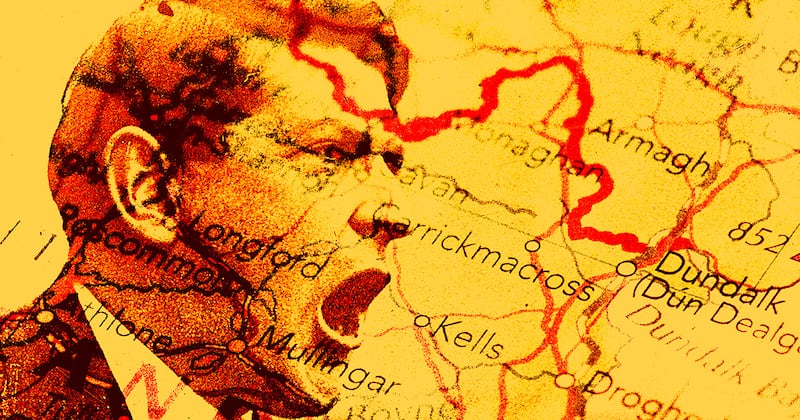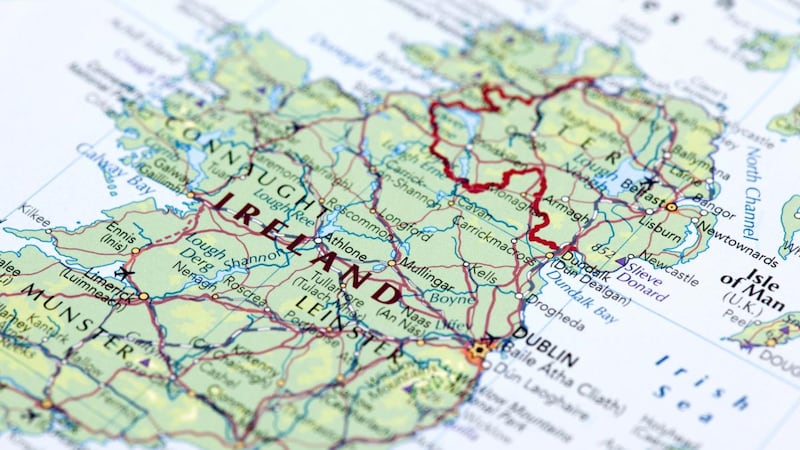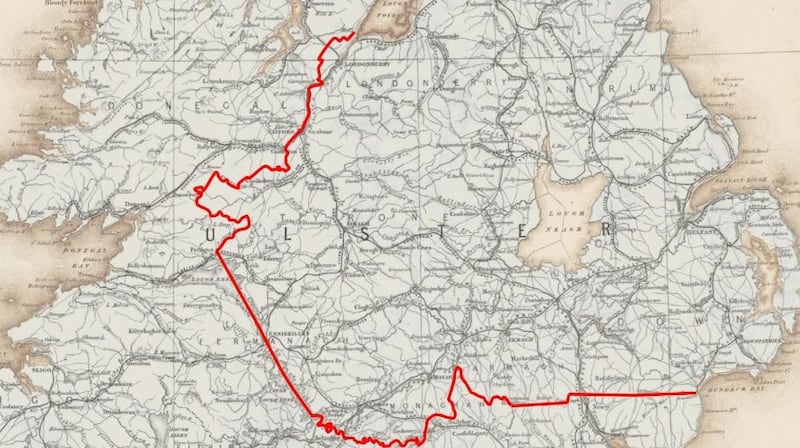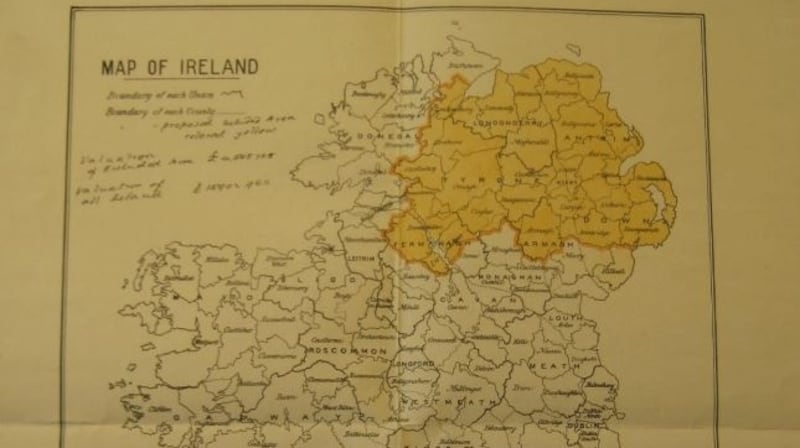The Irish Border is the defining feature of Ireland’s modern political geography. Established in law in the 1920 Government of Ireland Act, it was intended separate two parts of the United Kingdom that were to undergo simultaneous devolution. When the mechanisms of the Anglo-Irish Treaty brought the Irish Free State into being in December 1922, that boundary line became an international border. However, the roots of partition go back even further to before the first World War.
In the spring of 1914, after months of pressure, the British government secured secret approval from the leadership of Nationalist Ireland for the exclusion of a yet-to-be determined portion of Ulster from the jurisdiction of Home Rule. Crucially, the exclusion was to be strictly time limited. Once the leadership of the Irish Parliamentary Party had been locked in, the British government began in earnest to draw up possible schemes for the temporary exclusion of part of Ulster from Home Rule.
The Chief Secretary for Ireland, Augustine Birrell, called upon three senior Irish civil servants to draw up a boundary for an Ulster exclusion zone. These were Birrell's Undersecretary, Sir James B Dougherty; WF Bailey of the Estates Commissioners Office; and Sir Henry Augustus Robinson, Vice-President of the Irish Local Government Board. Birrell set May 6th as the deadline for receipt of proposals from his three advisers. When submitted, each scheme included a justification for why certain communities were left north or south of the dividing line.


Ultimately Doughtery's scheme for county option was adopted. On the eve of the first World War, Redmond and Carson faced each other down for their claim to Fermanagh and Tyrone but, following the 1916 Rising, Redmond abandoned his claim to what would become Northern Ireland's two Catholic-majority counties. Roy Foster has described Redmond as "desperate ... to achieve any settlement going" after the Rising.
Returning to 1914, the texts for the three exclusion schemes give unparalleled insight into the thinking which shaped the modern Irish Border. Two stark points emerge. Firstly, decisions unsympathetic to large borderland communities were taken in the name of administrative efficiency. Secondly, the Border’s architects explicitly bowed to force and the threat of violence. Decisions were made to leave substantial communities on the “wrong” side of the exclusion line because of the perceived strength of minority paramilitaries and agitators in their midst.

The Bailey Scheme
Taking WF Bailey first, his was the most disruptive scheme and it paid the least heed to existing administrative boundaries. Instead, Bailey relied on physical geography to craft a more visible border. In Fermanagh, Bailey cut straight through both of the county’s parliamentary divisions, running his boundary line directly up the middle of the Erne waterways system. Of the three schemes, Bailey’s was the only one in which his accompanying notes made no acknowledgement to the scheme’s temporary nature. Bailey used physical geography to create a visible and less permeable boundary line further suggesting he had a permanent settlement in mind.
Further down his boundary line, Bailey proposed the inclusion of the entire parliamentary division of North Monaghan within the unionist area. Monaghan was a county nobody else was even considering excluding from the jurisdiction of a Home Rule parliament. North Monaghan, which Bailey had put on the “unionist” side of his line had a two-thirds Catholic majority. Because his boundary line sliced through existing administrative units, it was impossible for Bailey to accurately estimate how many of the almost 1.2 million people he planned to exclude from the jurisdiction of the Home Rule parliament were Catholics or Protestants.

The Robinson Scheme
By far the most thorough of the three exclusion schemes was that devised by Sir Henry Robinson. In drawing his boundary line, Robinson took local government boundaries as his operational unit: a method his Undersecretary would later dismiss as unworkable. Robinson had drawn up the local authority areas for the Local Government Act in 1898 and appears to have been proud of the administrative subunits he had designed at that time.
The Robinson scheme proposed the exclusion of 26.85 percent of the population of Ireland and 28.58 percent of Ireland’s land by valuation. Robinson’s exclusion zone was two-thirds Protestant and one-third Catholic. Of the three, Robinson’s boundary line was the only one which explicitly considered infrastructure like road and rail connections.
Even though Robinson’s line was not ultimately adopted, his justifications are highly instructive in explaining the policy thinking underpinning the final shape of the Irish Border, especially the exclusion from Home Rule jurisdiction of the two Catholic majority counties, Tyrone and Fermanagh, and the majority Catholic city of Derry.
On the eastern end of the boundary line, the Robinson scheme showed considerably more sympathy to Catholics than simple six-county exclusion. Robinson left south Armagh and south Down, including the heavily Catholic town of Newry, within what he called the "Irish Parliamentary area". One can only imagine how differently subsequent Irish history might have played out had South Armagh been under Dublin rule from the outset.
In the western half of Ulster, Robinson made a number of sweeping decisions regarding large swathes of territory with solid Catholic majorities. Two Catholic majority Rural District Councils in Donegal – Strabane No 2 and Londonderry No 2, were subsumed into the excluded Unionist area with the unintended consequence that the Inishowen peninsula was put under Home Rule (Dublin) jurisdiction while being entirely cut off by land from the rest of the jurisdiction.
In drawing his line, Robinson factored in "the degrees of obstreperousness in the rival sectarian factions on the border line." In terms of appeasing volatile sectarian communities, Robinson bent to both nationalist and unionist extremists. Of Crossmaglen nationalists, he opined that they "are about the warmest lot I know."
In Fermanagh, Robinson's justification was even more illuminating. Here he justified placing an area with a 3,000-strong Catholic majority into the "Ulster section" because "there has been more money spent on armament and drilling here than in any part of the county and these Enniskillen and Lisnaskea Protestant farmers are the most blood thirsty set of ruffians I know".
Defending the inclusion of these Catholic areas in on the Ulster side of the line, Robinson felt that “there would be no peace or settlement along the whole border line if these people were left out.” Bailey had applied the same logic to justify excluding North Monaghan and the whole of Tyrone from Home Rule. He described the Protestant minorities in these areas as being “very strong and … better drilled and armed than in almost any part of the Province”.
Despite all of his careful work and calculations, Robinson all but threw away his careful cartography at the end of his letter to Birrell stating: “I expect you will find that the Ulstermen’s minimum will be six entire counties in and no option … Personally, I agree about no option [putting the matter to a plebiscite]. It will indeed mean riots when this crucial issue is announced”.

The Dougherty Scheme
The third and final scheme to be submitted was that of Undersecretary Dougherty, the highest-ranking civil servant in Ireland and, as a native of Garvagh in the east of Co Derry, the only Ulsterman among the three men consulted. Dougherty first wrote on May 7th explaining that it would be “a difficult, if not impossible job to construct these pens” and that “the policy of exclusion, whatever plan may be adopted, bristles with difficulties and … I do not see how they are to be surmounted.”
Dougherty’s full memorandum was submitted on May 11th. It considered the merits and demerits of dividing the province by local government areas, parliamentary divisions, and full counties. Of these, Dougherty’s preference was for the scheme which was ultimately adopted: county option.
Dougherty’s rationale focussed largely on the administrative headache he foresaw in dealing with an otherwise excluded area in which local government boards, county councils, and existing parliamentary constituencies would be split across two jurisdictions.
All three schemes recommended that Ulster’s second city, Derry, which had a 56 percent Catholic majority, be excluded from Home Rule and put in what Dougherty called “the new Ulster”. Robinson argued that it was “impossible to keep the maiden city out of the parent County”.
Furthermore, Dougherty reminded his Chief Secretary that “the City of Derry has strong sentimental attractions for the Ulster Protestant, and it is the headquarters of the County administration” adding that “it is unlikely the ‘Covenanters’ will now consent to see the City excluded from Protestant Ulster.”
Despite declaring for whole-county option, Dougherty fudged his answer to the question of whether four or six counties should be excluded. His rationale for four-county exclusion was based on the fact that such a scheme would create “a tolerably compact area” but he seems on balance to have conceded that six counties would be the more realistic outcome due to the fact that “it is difficult to see how the Ulster Covenanters in the four included Counties can abandon their brethren in Tyrone or Fermanagh.” No more than Robinson, Dougherty was conceding to the power of force and threat in making his decisions over Ulster.
The stark reality of the Irish Border is that it was never intended to be an international boundary. What began as an idea for a temporary demarcation line between two devolved United Kingdom parliaments evolved into something much more significant.
Only with the inauguration of the Irish Free State in December 1922 did the boundary line officially become an international border. Its form remained fluid until the collapse of the Boundary Commission three years later, confirming Dougherty's 1914 line as the Border ever since.
The subsequent history of the Border is one dotted with customs posts, incursions, cratering, spiking, checkpoints, bombings, and military installations before the Border began one again to melt into the landscape. In February 2007, the last of the watchtowers – colloquially known in the British Army as sangars; a term laden with allusions to other historic frontiers – was dismantled.
Fears that the Border would "harden" with Brexit were narrowly averted at the start of this year. Instead of a land border, Northern Ireland is now grappling with the challenges of an even less visible frontier: the trade barrier in the Irish Sea. The sea border has had its own ramifications.
It is interesting that, when partition was first considered, its waterways and their tidal termini never entered into the discussion because it was intended that the whole island of Ireland would remain an integral part of the United Kingdom. The subsequent evolution of the land border is a study in the law of unintended consequences. It remains to be seen what fresh challenges the newest barrier in Anglo-Irish relations will cast up from its depths.







